If you have never tried miniature photography, you should. And we are here to help you get started with this creative and imaginative technique.
What is Miniature Photography?
Miniature photography does not mean you will be using a miniature camera. All your equipment is life-size. But you use miniature figures as your subject. You can use any miniature figures you have. Maybe you have a box full of Lego pieces. Or perhaps you still have action figures hidden away in the wardrobe. Now is the time to dig them out. Miniature photography is about creating scenes. The size gives you complete creative control. You can tell serious stories, or you can be funny. The possibilities are near limitless.
What You Will Need to Create Miniature Photography
You have a lot of freedom to chose props and settings. But there are some specific pieces of equipment you will need.
Figures
The type of figure you use is entirely up to you. Being of small stature is their only requirement. Lego people are great, especially if you want to emulate specific films. This is also true for dolls and action figures. If you do not have any, you can go to a toy shop. You can buy yourself a pack of army men or tiny animal toys. Any miniatures will do.
Camera
Ideally, you want a DSLR or mirrorless camera with interchangeable lens capabilities. These cameras will give you manual control over the camera settings. That gives you more creative options when shooting your scene. But if you do not have a camera, you can use your smartphone. A phone camera will not give you the same possibilities. But you can still do a lot of great work. There are good editing programs for smartphones. And it’s easy to share on social media.
Macro Lens
The ideal lens for miniature photos is a wide-angle macro lens. It will allow you to get super close for tightly framed sharp photos. If you do not have a wide-angle macro, other macro lenses will work. You can even shoot miniatures without a standard zoom lens. But you will not be able to capture the same tight shots.
Tripod
We recommend using a tripod for photographing miniatures. The stability gives you greater freedom when it comes to camera settings. You can use a slower shutter speed and smaller apertures without fear of camera shake. If you are shooting a sequence, then the tripod will keep the camera in position. You will not have to realign the camera for each shot.
10 Tips for Great Miniature Photography
1. Embrace Your Inner Director
With miniature photography, you have complete creative control. Your subjects are figurines, so there is no shyness or embarrassment. And their size gives you the freedom to do as you please. You can go crazy with ideas and concepts. You can plan your shots in great detail. And you can even create storyboards for longer sequences. Channel the spirit of Steven Spielberg. Get into a cinematographer’s frame of mind. Think about how you want to frame your shots. And plan how you want your sequences to progress.
2. Get The Right Camera Settings
The camera settings you choose will depend on the type of images you want to create. But we recommend going manual. Turn off the auto-functions and use your instincts. A low ISO setting will give you the best quality images. And the tripod will allow you to use a slower shutter speed. The fact that your subject is inanimate also helps to avoid blurry images. The primary setting you need to think about is your aperture. Light and movement should not be a problem. But you need to think about how much of your scene you want in focus. And that means getting the correct aperture. A narrow aperture will keep your whole scene in focus with a deep depth of field. Or, if you want a soft bokeh effect, you can go for a larger aperture for a shallow depth of field. This works well with macro shots.
3. Create Your Own Home Studio
Working with miniature models means you can work with a miniature studio. You do not need to rent a space as you can just use a table in your house. Clear an area in your house. Unblocked natural light is a bonus. And you will need a bit of space to adjust your equipment. If you are taking pictures of individual figurines in the style of product photography, you can create an infinity curve. If your scene is a bit more elaborate, you can use paper as the floor and backdrop. It does not have to be white. You can use whatever suits your scene. You can use a portable studio box. They are great for product photography. But I think they are a bit restrictive for miniature scenes.
4. Use Lamps for Home Studio Lighting
You do not need big lighting rigs or complicated flash systems. You can use the lights you have at home. Directional lamps are perfect. They will give you bright light that you can alter as you need to. You will need more than one lamp, though. With two (or more) lamps, you can remove strong shadows. You can use white paper or mirrors for light reflectors. And you can use colored paper or plastic for lighting effects.
5. Recreate Scenes From Your Favourite Films
Many of the most popular toys are characters from films. That makes it easy to recreate your favourite scenes, only in miniature. You can have Luke Skywalker dual Darth Vader in Cloud City. Or you could have miniature Indiana Jones running from a bouncy ball. Recreating scenes with toys is a great way to practice framing and composition. You can start by copying real film scenes, and then develop your own style.
6. Use Real-Size Props for Added Perspective
Using real-size objects as props in your miniature scenes is a great way to introduce extra humour into your photography. You can exploit the size difference between the miniatures and oversized items. Real-world objects can take on completely different meanings when you introduce them into the small world. A phone can be turned into a massive piece of electronic machinery. And broccoli can become trees.
7. Make Your Own Props and Scenery
If you like a bit of DIY, you can get crafty. The creative possibilities are endless if you make your props. And that includes scenery too. Paper and cards are excellent materials to work with. You can cut them the way to like. And they are easy to paint. Bits of wood and metal, strips of wire, and pieces of fabric can all be used to make miniature props. Any bit of old rubbish and be turned into something for your set. Toilet rolls, drinks cans, and old bottles can all be reused. You can give them a new life in a miniature world.
8. Make Your Own Miniature Models
The crafts do not have to stop once the scene has been set. You can create your miniature figures too. Plasticine is a great place to start. With this malleable material, you can create any figure you want. They can be a true-to-life humanoid or just some kind of blob. As with the set creation, you can make figures out of other materials, even bits of rubbish. Inventing new characters is excellent for expanding your miniature universe. Once you start making unique characters, a whole new world opens up.
9. Shoot Miniature Scenes Outside
You do not always have to shoot miniatures in a studio. You can take your figurines outside and shoot on location. Using miniatures outside can give you a new macro view of the world. Small flowers become giant trees, and tiny puddles become massive lakes. Shooting on location is another way to test your cinematic eye. You are looking for new places to set your scenes. You can introduce natural elements to create epic compositions.
10. Try Your Hand at Stop-Frame Animation
Shooting miniature photography is an entryway into stop-frame animation. Much of the photography work follows the same principles. You are creating scenes with a cinematic point of view. And your planning sequences. Animation is the next logical step. Stop-frame animation can be a painstaking process. Hundreds of frames only work out to a few seconds of footage. So you need to be patient. You do not need any special software for this form of animation. You can use Adobe Photoshop to put the frames together to make the animation.
Conclusion
Miniature photography is a lot like other kinds of photography. It’s a bit like product photography. It’s similar to still-life. And it’s a kind of macro photography. But once you try it for yourself, you will quickly learn it’s its own unique area of photography. It’s creative and imaginative, it’s fun and funny. You have complete creative control. You can create any scene you want. And you can use whatever you want. And if that’s not enough, you can animate it. Capture both miniature and the world’s hidden beauty with our Macro Magic course!


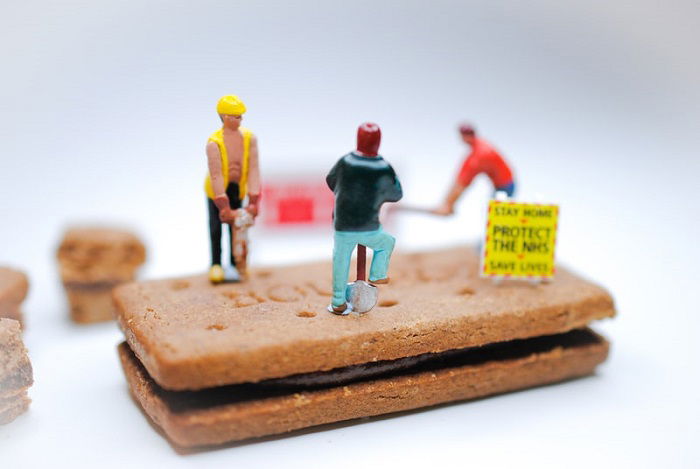

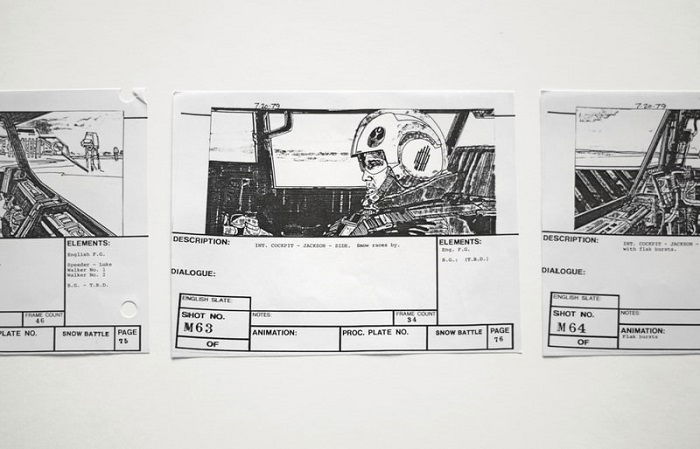
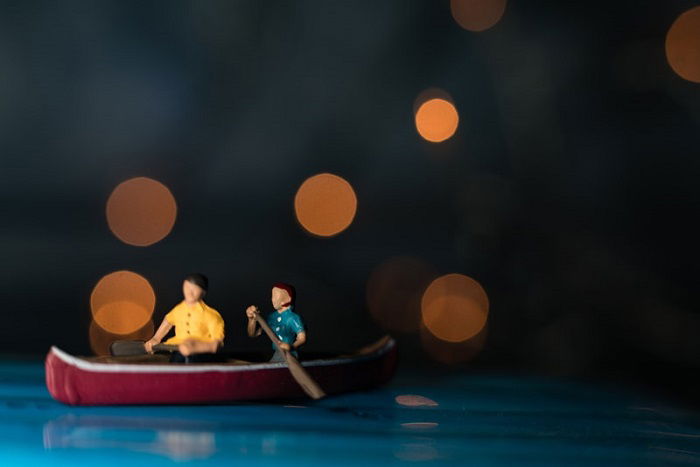
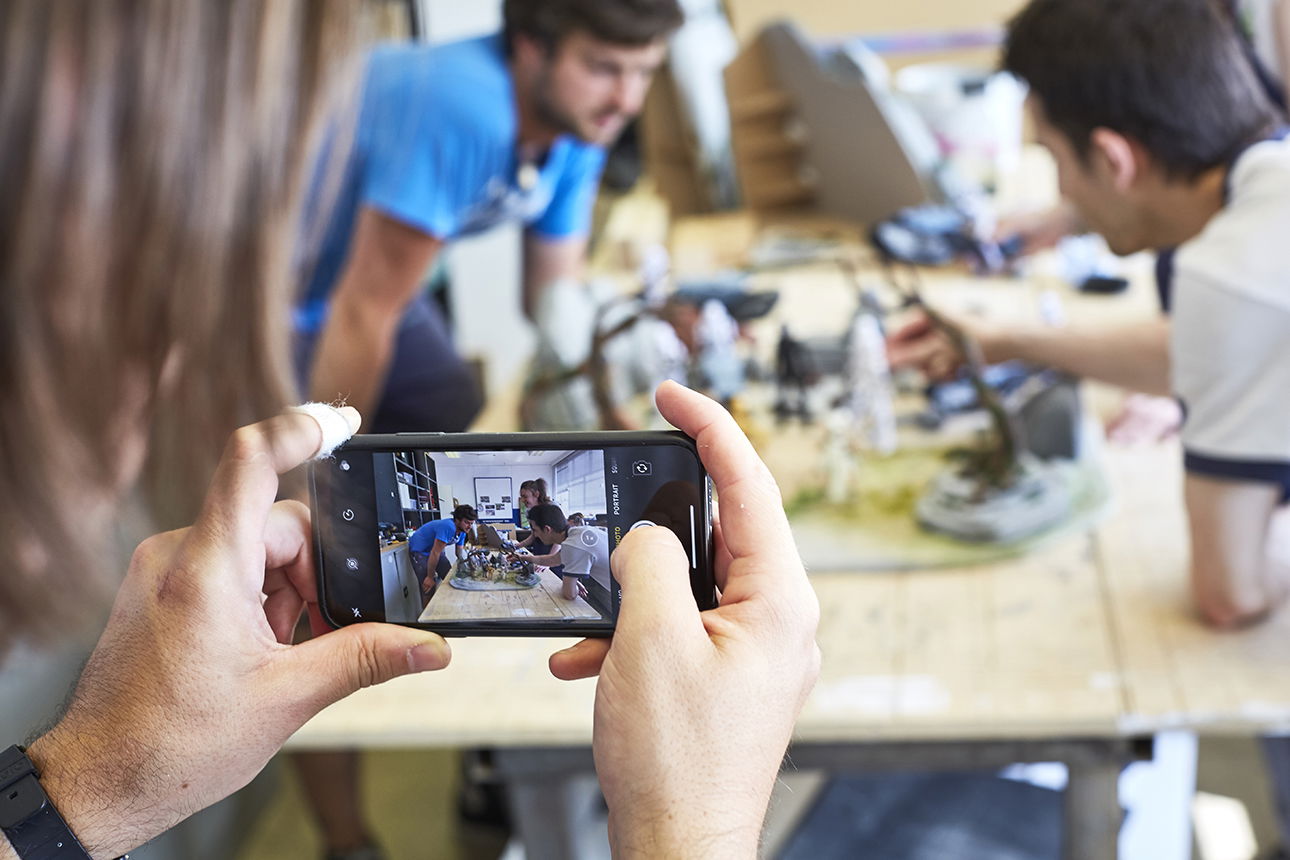
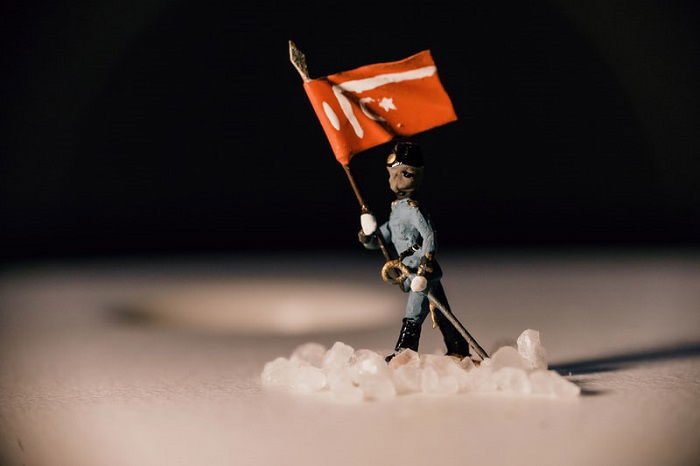
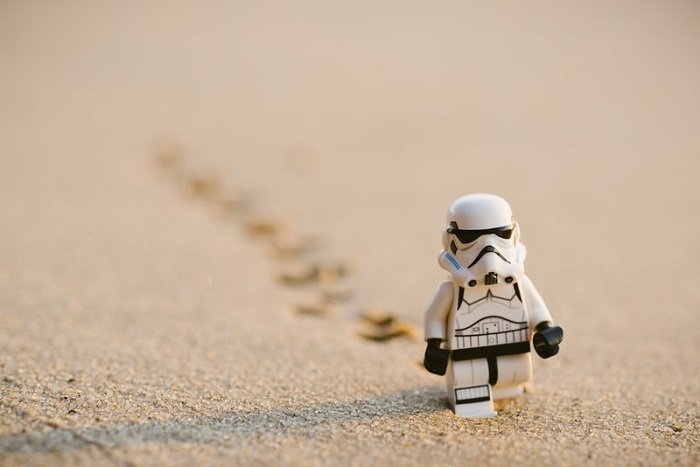
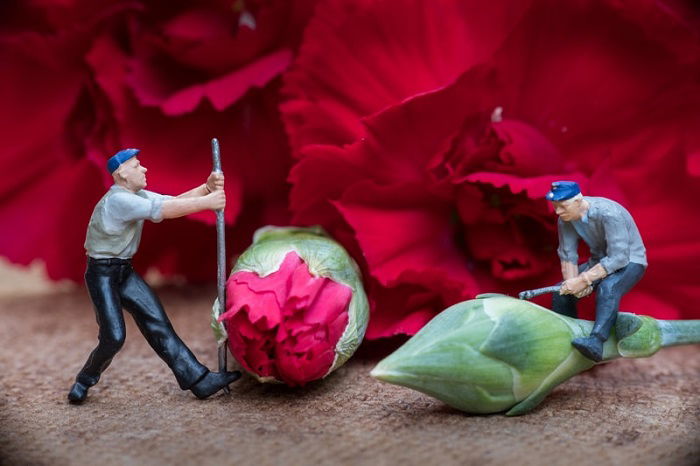
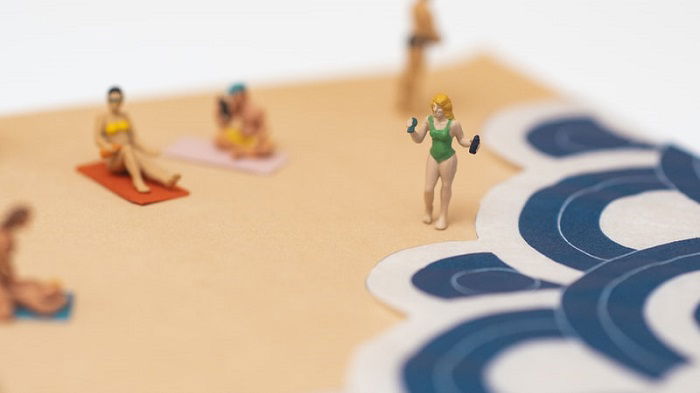
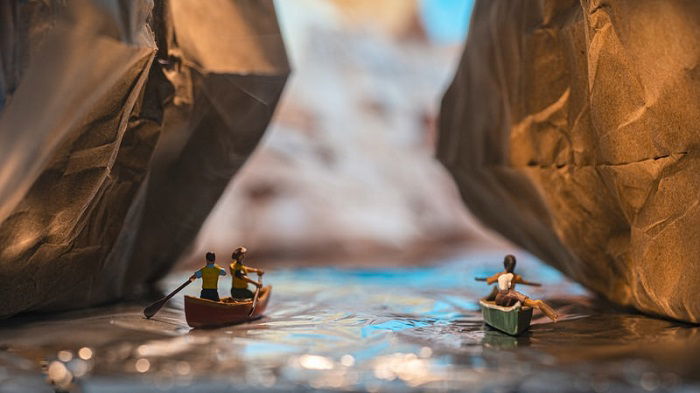
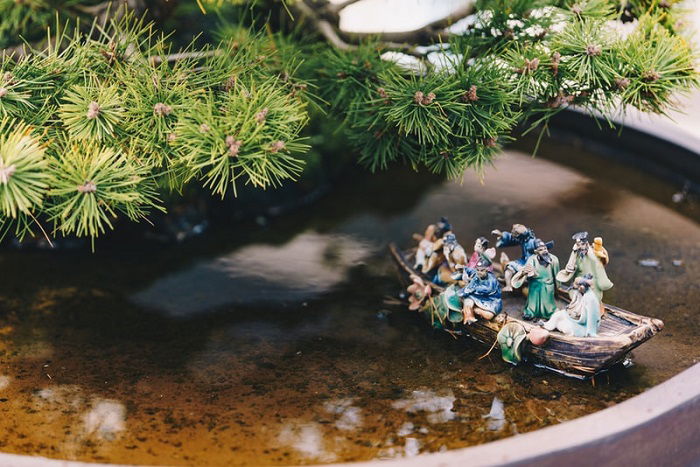
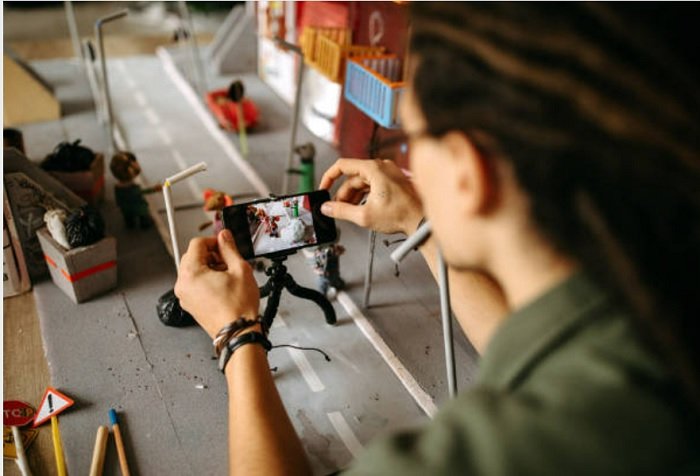
title: “10 Miniature Photography Tips For Tiny But Creative Photos” ShowToc: true date: “2023-02-10” author: “Deborah Ramos”
If you have never tried miniature photography, you should. And we are here to help you get started with this creative and imaginative technique.
What is Miniature Photography?
Miniature photography does not mean you will be using a miniature camera. All your equipment is life-size. But you use miniature figures as your subject. You can use any miniature figures you have. Maybe you have a box full of Lego pieces. Or perhaps you still have action figures hidden away in the wardrobe. Now is the time to dig them out. Miniature photography is about creating scenes. The size gives you complete creative control. You can tell serious stories, or you can be funny. The possibilities are near limitless.
What You Will Need to Create Miniature Photography
You have a lot of freedom to chose props and settings. But there are some specific pieces of equipment you will need.
Figures
The type of figure you use is entirely up to you. Being of small stature is their only requirement. Lego people are great, especially if you want to emulate specific films. This is also true for dolls and action figures. If you do not have any, you can go to a toy shop. You can buy yourself a pack of army men or tiny animal toys. Any miniatures will do.
Camera
Ideally, you want a DSLR or mirrorless camera with interchangeable lens capabilities. These cameras will give you manual control over the camera settings. That gives you more creative options when shooting your scene. But if you do not have a camera, you can use your smartphone. A phone camera will not give you the same possibilities. But you can still do a lot of great work. There are good editing programs for smartphones. And it’s easy to share on social media.
Macro Lens
The ideal lens for miniature photos is a wide-angle macro lens. It will allow you to get super close for tightly framed sharp photos. If you do not have a wide-angle macro, other macro lenses will work. You can even shoot miniatures without a standard zoom lens. But you will not be able to capture the same tight shots.
Tripod
We recommend using a tripod for photographing miniatures. The stability gives you greater freedom when it comes to camera settings. You can use a slower shutter speed and smaller apertures without fear of camera shake. If you are shooting a sequence, then the tripod will keep the camera in position. You will not have to realign the camera for each shot.
10 Tips for Great Miniature Photography
1. Embrace Your Inner Director
With miniature photography, you have complete creative control. Your subjects are figurines, so there is no shyness or embarrassment. And their size gives you the freedom to do as you please. You can go crazy with ideas and concepts. You can plan your shots in great detail. And you can even create storyboards for longer sequences. Channel the spirit of Steven Spielberg. Get into a cinematographer’s frame of mind. Think about how you want to frame your shots. And plan how you want your sequences to progress.
2. Get The Right Camera Settings
The camera settings you choose will depend on the type of images you want to create. But we recommend going manual. Turn off the auto-functions and use your instincts. A low ISO setting will give you the best quality images. And the tripod will allow you to use a slower shutter speed. The fact that your subject is inanimate also helps to avoid blurry images. The primary setting you need to think about is your aperture. Light and movement should not be a problem. But you need to think about how much of your scene you want in focus. And that means getting the correct aperture. A narrow aperture will keep your whole scene in focus with a deep depth of field. Or, if you want a soft bokeh effect, you can go for a larger aperture for a shallow depth of field. This works well with macro shots.
3. Create Your Own Home Studio
Working with miniature models means you can work with a miniature studio. You do not need to rent a space as you can just use a table in your house. Clear an area in your house. Unblocked natural light is a bonus. And you will need a bit of space to adjust your equipment. If you are taking pictures of individual figurines in the style of product photography, you can create an infinity curve. If your scene is a bit more elaborate, you can use paper as the floor and backdrop. It does not have to be white. You can use whatever suits your scene. You can use a portable studio box. They are great for product photography. But I think they are a bit restrictive for miniature scenes.
4. Use Lamps for Home Studio Lighting
You do not need big lighting rigs or complicated flash systems. You can use the lights you have at home. Directional lamps are perfect. They will give you bright light that you can alter as you need to. You will need more than one lamp, though. With two (or more) lamps, you can remove strong shadows. You can use white paper or mirrors for light reflectors. And you can use colored paper or plastic for lighting effects.
5. Recreate Scenes From Your Favourite Films
Many of the most popular toys are characters from films. That makes it easy to recreate your favourite scenes, only in miniature. You can have Luke Skywalker dual Darth Vader in Cloud City. Or you could have miniature Indiana Jones running from a bouncy ball. Recreating scenes with toys is a great way to practice framing and composition. You can start by copying real film scenes, and then develop your own style.
6. Use Real-Size Props for Added Perspective
Using real-size objects as props in your miniature scenes is a great way to introduce extra humour into your photography. You can exploit the size difference between the miniatures and oversized items. Real-world objects can take on completely different meanings when you introduce them into the small world. A phone can be turned into a massive piece of electronic machinery. And broccoli can become trees.
7. Make Your Own Props and Scenery
If you like a bit of DIY, you can get crafty. The creative possibilities are endless if you make your props. And that includes scenery too. Paper and cards are excellent materials to work with. You can cut them the way to like. And they are easy to paint. Bits of wood and metal, strips of wire, and pieces of fabric can all be used to make miniature props. Any bit of old rubbish and be turned into something for your set. Toilet rolls, drinks cans, and old bottles can all be reused. You can give them a new life in a miniature world.
8. Make Your Own Miniature Models
The crafts do not have to stop once the scene has been set. You can create your miniature figures too. Plasticine is a great place to start. With this malleable material, you can create any figure you want. They can be a true-to-life humanoid or just some kind of blob. As with the set creation, you can make figures out of other materials, even bits of rubbish. Inventing new characters is excellent for expanding your miniature universe. Once you start making unique characters, a whole new world opens up.
9. Shoot Miniature Scenes Outside
You do not always have to shoot miniatures in a studio. You can take your figurines outside and shoot on location. Using miniatures outside can give you a new macro view of the world. Small flowers become giant trees, and tiny puddles become massive lakes. Shooting on location is another way to test your cinematic eye. You are looking for new places to set your scenes. You can introduce natural elements to create epic compositions.
10. Try Your Hand at Stop-Frame Animation
Shooting miniature photography is an entryway into stop-frame animation. Much of the photography work follows the same principles. You are creating scenes with a cinematic point of view. And your planning sequences. Animation is the next logical step. Stop-frame animation can be a painstaking process. Hundreds of frames only work out to a few seconds of footage. So you need to be patient. You do not need any special software for this form of animation. You can use Adobe Photoshop to put the frames together to make the animation.
Conclusion
Miniature photography is a lot like other kinds of photography. It’s a bit like product photography. It’s similar to still-life. And it’s a kind of macro photography. But once you try it for yourself, you will quickly learn it’s its own unique area of photography. It’s creative and imaginative, it’s fun and funny. You have complete creative control. You can create any scene you want. And you can use whatever you want. And if that’s not enough, you can animate it. Capture both miniature and the world’s hidden beauty with our Macro Magic course!













